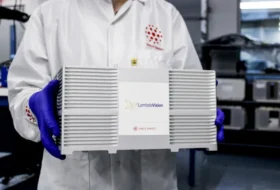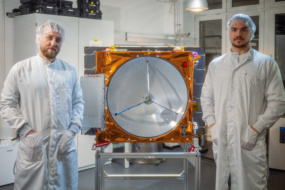Farcast, the CA-based satcom startup developing next-generation user terminals, secured a $2M investment from Lockheed Martin as part of an ongoing Series A extension round.
Fly on the wall: Under the agreement, Lockheed Martin landed an observer seat on Farcast’s board. That involvement will give the defense prime an up-close view of the startup’s growth plans, and the ability to better align its hardware and software ecosystem with Farcast’s tech.
“In short, this investment is meant to mature Farcast’s solution to offer America and its allies a sharper, smarter edge in delivering mission-critical capabilities,” Chris Moran, VP and general manager of Lockheed Martin Ventures, told Payload via email.
Farcast’s user terminals stand to bring Lockheed Martin’s defense tech portfolio into the modern era. Compared to many other user terminals used by the military, Farcast’s flat panel antennas (FPAs) are cheaper, smaller, lighter, and higher performance.
- The FPAs can transmit and receive Ka-band signals on the same aperture at the same time, improving the data throughput capabilities of connected warfighters.
- They’re built to be modem-agnostic, meaning they can easily connect to a wide range of satellites in orbit.
- Critical to Lockheed’s suite of military aircraft, Farcast’s FPAs utilize active electronically scanned antennas—meaning they can quickly hop from one satellite to another. This capability will become increasingly important as the SDA’s Proliferated Warfighter Space Architecture (PWSA) comes online.
“We have spoken with tens of different engineering leaders within Lockheed….they’ve confirmed that this technology is needed in multiple use cases,” Siamak Ebadi, Farcast’s CEO, told Payload.
Breaking the bank: Farcast’s technology aims to increase the US military’s satcom connectivity, especially for highly mobile troops. The company’s main competitive advantage, however, may lie in its high-quality user terminals produced at low cost through outsourcing and COTS components.
Farcast plans to demonstrate its technology with AFRL and further integrate with several commercial partners throughout the year.




